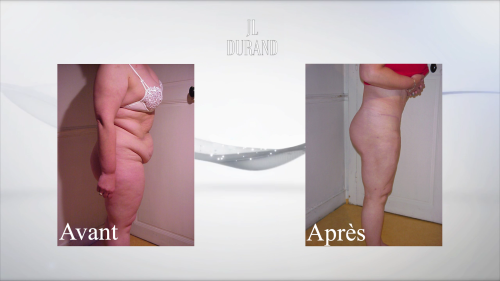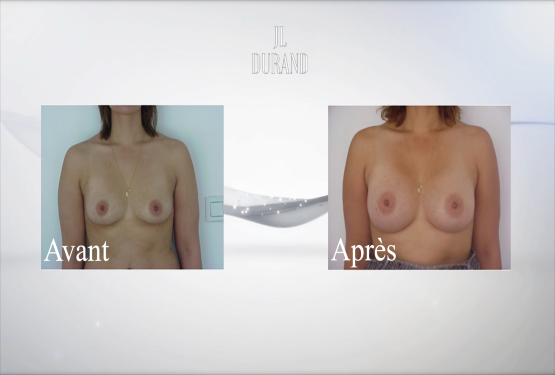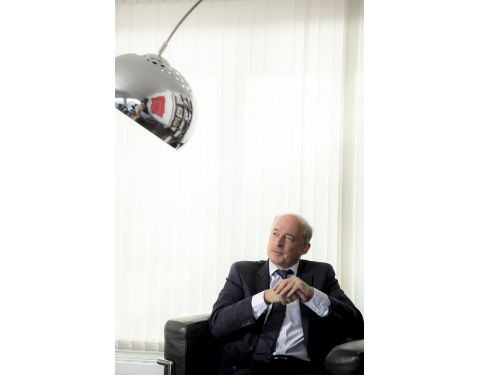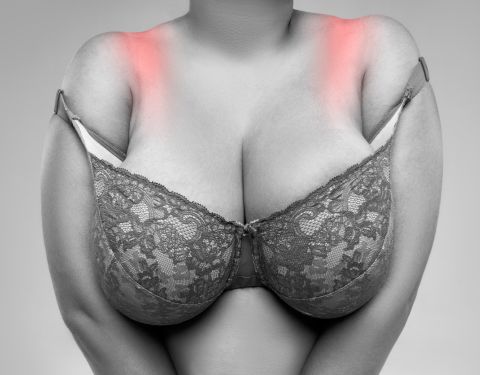As soon as the first liposuction surgery was performed, plastic surgeons had an idea to reuse the extracted fat to fill another place of the body.
This method of own fat transfer is called lipofilling.
Lipofilling in modern medicine
This method was initially disappointing: injected fat showed a tendency to resorption in a significant proportion, resulting in the short-lived and unreliable results.
However, plastic surgeons did not dwell on these first disappointments and tried to understand the reasons for these failures. The results were improving step by step, but only since 1995, the injection of autologous fat, also called lipostructure, has become a truly reliable method.

Lipofilling can be applied to a large number of natural, post-traumatic or iatrogenic indentations. It’s possible to generalize the objectives and criteria for this type of operation as follows:
-
Aesthetic criteria
- Filling and reducing some types of wrinkles, particularly facial lines
- Restoring the “fullness” of a thin face or at the first sign of an aging face
- Restoration of the volume and shape of the face
- In addition, associated with some cervicofacial lift, in order to improve the harmony of the face
- In order to improve the contour of the middle third of the face after the first lifting, without resorting to a new procedure of lifting
- Correction of roughness resulting from liposuction
- Re-modeling of the silhouette, which is also called lipomodelling: it lies in selecting excess fat and injecting it into areas where its volume is not enough.
-
Criteria for reconstructive surgery
- Filling tissue indentation because of trauma.
- Correction of fat-dissolving after “triple therapy” in case of patients with HIV +.
- Improvement of aesthetic results of breast reconstruction
It should be understood that lipofilling is a real surgical operation, which must be performed by a plastic surgeon.

Advantages and basic principles of the method on the example of breast lipofilling
Despite a large number of different, including sophisticated methods of the correction of breast, buttocks, and face, some small defects are still possible. It can be insufficient volume or projection, asymmetry of the décolleté zone. To correct these shortcomings, and even, in exceptional cases, completely reconstruct the breast, it’s possible to transplant the patient’s fat with the help of lipofilling.
The principle of the method consists of transplanting the patient’s fat from the potential donor place into the problem area.
This method is actually a fat transplant: it means that the fat must be accepted and mastered by the recipient. New injections are made in the pectoral muscle and under the skin for reconstruction with the help of prostheses or in all tissue surfaces for autogenous reconstruction.
Modern methods of fat transplantation allow a harmonious distribution of fat cells, which makes the risk of fat cyst formation or necrosis of adipose tissue more limited.
Necrosis of adipose tissue can be manifested by the appearance of hard and smooth, moving and slightly painful nodes in the chest. Their external clinical appearance as a whole is very typical.
The method of breast lipofilling originates from the practice of transplanting fat deposits from the face. It is also called lipomodelling. It is widely used and well mastered in breast reconstruction surgery, where it showed good results.

If the breast tumor increases in volume after the reconstruction, the rule should remain the same as for the native breast: in case of radiological doubts, micro biopsy will be performed.
At present, it can be assumed that breast lipostructure performed in accordance with the rules and skill of the experienced plastic surgeon does not cause any special diagnostic difficulties for the radiologist working with the chest X-ray.
Breast fat transfer after the reconstruction is often performed during the second operating stage in combination with other actions aimed at aesthetic “fine-tuning” of both breasts. The fat transfer should be performed by a competent and qualified plastic surgeon, trained specifically for this type of surgery, performed in a practical surgical context.
Everything you need to know before the operation
Recommendations for preparation before the surgery are similar to circular facelift and abdominoplasty.
Lipofilling is usually performed under deep local anesthesia with intravenous injection of tranquilizers (“wakeful”) anesthesia. In rare cases, local or general anesthesia is used. All the moments associated with anesthesia are discussed with the doctor and anesthesiologist before the surgery.
Usually, this operation is performed on an outpatient basis with the release on the same day. Very rarely patients are recommended to stay in the hospital overnight.
How lipofilling is performed (general case)
In practice, surgeons use their methods, but there are several basic principles:
The operation begins with the exact determination of the fat selection zones, as well as the places of its injection. Fat tissue is taken atraumatically through small cuts hidden in natural folds, using a very thin suction cannula.
Then, for several minutes, centrifugation is carried out to separate undamaged fat cells that will be transplanted from elements that cannot be transplanted. Injection of adipose tissue is performed through a 1 mm cut using a micro-cannula.
Thus, microparticles of fat are introduced into different planes in many directions in order to increase the contact surface between implanted cells and recipient tissues, which improves the survival of the transplanted fat cells.
Since this is a real transplantation of living cells, and if the technique is correct, and the material intake is effective, the transplanted cells remain alive in the body. Therefore, the lipostructure is the final method, since the transplanted fat cells will live as much as the tissues that are around them.
The duration of the operation will depend on the amount of injected fat and treatment places. On average, it takes 30-120 minutes.
Breast lipofilling
Breast lipofilling after the reconstruction is usually carried out under general anesthesia because, during the operation, several actions that can be associated with different anatomical areas are performed:
Conditions of hospitalization: breast lipofilling requires a short hospitalization, approximately from 12 to 24 hours. In case of other surgical procedures, hospitalization will depend on the most severe one.
The surgeon starts the operation with the determining of the zones, from where the fat will be transplanted, and the places of its transplantation. The choice of these zones depends on the excessive fat and patient’s desire, since this transfer usually provides a significant improvement in the provided zones, carrying out the real liposuction of surplus fat. The choice of the zones also depends on the amount of fat required and the availability of such available places.
The adipose tissue is taken through small cuts hidden in natural folds, using a thin suction cannula. Then centrifugation is carried out for several minutes to separate intact fat cells that will be transplanted from elements that cannot be transplanted.
On the other hand, if fat transplantation cannot provoke breast cancer, then such operation does not exclude repetition if the relapse re-appears in the local form.
Transplantation of adipose tissue is performed through a cut from 1 to 2 mm using a micro-cannula. Thus, microparticles of fat are transplanted from different zones through many independent channels in order to increase the contact surface between the implanted cells and the recipient tissues, which will allow better survival of the transplanted fat cells. If possible, an additional correction is made in order to reflect partial resorption after the surgery.
Since this is real transplantation of living cells (from 60 to 70%, depending on the patient), the transplanted cells remain alive. Therefore, lipostructure is the final choice, since the transplanted fat cells will live as much as the tissues that are around them. But changes in these fat cells are in accordance with the degree of obesity of the patient (if the patient is losing weight, then their volume will decrease).
The duration of the operation depends on the number of donor places, the amount of fat provided for the transplant, and the possible change in position. It, depending on the situation, can vary from 1 hour to 2, sometimes even more, if other necessary surgical actions are performed.
Results after the operation
Immediately after the operation, as a rule, there is swelling of tissues (edema), which, as a rule, completely dissolve within 5-15 days. In places where fat injections were performed, there are bruises, which will come off within 10-20 days.
Thus, if physical recovery, as a rule, comes quickly because of the light and superficial nature of the operation, it is necessary to take into account the issue of social discomfort caused by swelling and bruising, in order to adapt to it your family, professional and social life.
For at least a month, do not expose the treated areas to the sun or ultraviolet radiation, as this can cause a risk of skin pigmentation. The end result will appear 2-3 weeks after the operation.

Lipofilling before and after
The result of lipofilling is most often satisfactory. If the criteria and methods have been properly coordinated, indentations are usually filled correctly and the volume is restored.
There is a difference, ranging from 20 to 40%, between the amount of injected fat and the amount of fat taken for transplantation. The doctor will consider this in assessing the parameters of fat injection.
In particular, if we are talking about facial lipofilling used for rejuvenation, it will be necessary to study the characteristics of aging in photographs taken in youth and analyze them in comparison with the patient’s current state.
It is necessary to know that the injected fat will remain sensitive to future weight fluctuations. Therefore, in case of weight loss or weight gain, the zones that undergone lipostructure can change in size. Over time, the result will gradually deteriorate due to the natural continuation of the aging of the tissues.
Disadvantages of lipofilling
In some cases, there are local shortcomings (they cannot be classified as complications: local hypercorrection, small roughness, and asymmetry. They can be eliminated with additional treatment and lipostructural “fit” 6 months after the operation.

Complications after lipofilling
As a rule, there are no really serious complications after a qualitative lipostructure. In order to avoid complications, all the prescriptions of the doctor must be strictly observed. In particular, the use of the cannula can favorably affect the skin, blood vessels, and nerves.
Most often after lipofilling of the breast and buttocks, there is a hypercorrection, because of the introduction of an excessive amount of fat, which leads to excess volume.
This hypercorrection quickly becomes permanent, and its treatment, by its nature, is more complicated, since it is not possible by means of ordinary liposuction: most often, only a repeated operation with a real surgical removal of excess fat will ensure correction of such hypercorrection.
In this article, we detailed the peculiarities of such operation as lipofilling, when it’s performed in the best clinics in France. When planning the operation, do not forget about the real risks of surgical intervention. The right choice of a qualified and experienced plastic surgeon will allow you to get the maximum effect from the operation and reduce the likelihood of possible complications.










